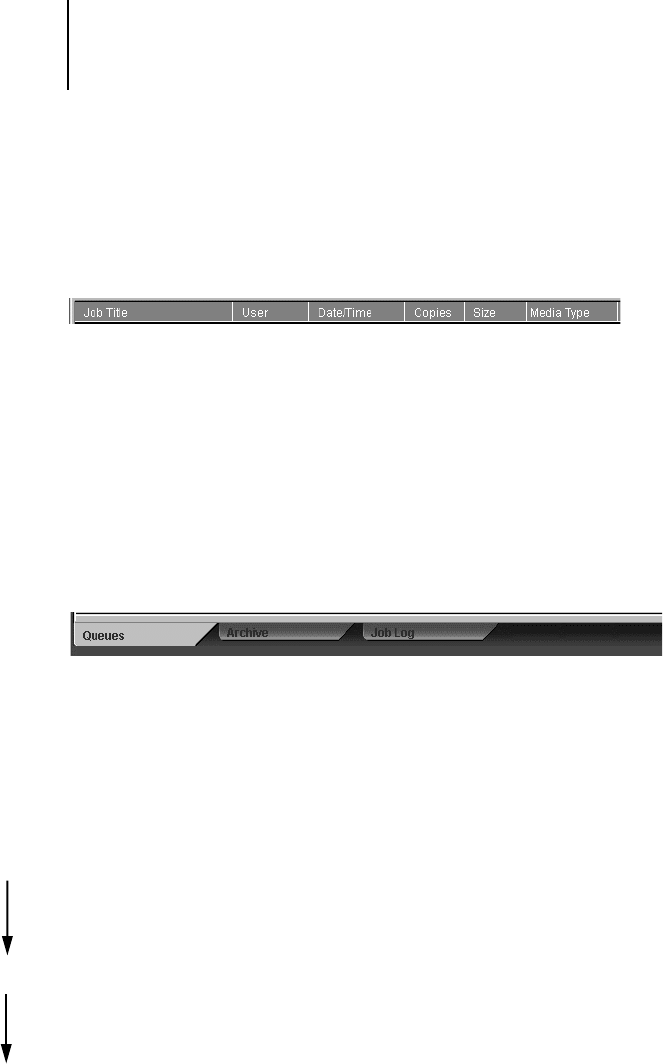
2
2-14 Introduction to the Command WorkStation
You have considerable flexibility in arranging this information in the display.
For example, you can add Media Type to the display if you want to see which
jobs call for special paper or other media.
You can choose not to display headers for options that are not used at your
site, or you can display all possible options and scroll to see the ones that are
less important to you. If you just want to experiment, when you are finished
you can choose Revert to Default Settings from the Window menu.
For instructions on customizing the display in the Queues and Archive
windows, see page 3-3.
Window selection tabs
The Command WorkStation always starts out by displaying the Queues
window, from which you view current job processes and control job flow and
file storage. To go to another window, click the corresponding tab at the
bottom of the Command WorkStation display.
Queues window
The Queues window is a dynamic display of the job staging area: jobs are
lined up for processing and printing, some of them are being held waiting for
directions, some are moving from one stage or queue to another and are
finally dropped from the list, some are held for processing by the operator,
and some are held in a different queue in case you need to reprint them.
One approach to understanding the dynamic display is to imagine the three
parts of the Queues window corresponding to the three stages of printing,
illustrated as a downhill flow.
Spooling
RIPping
Printing
